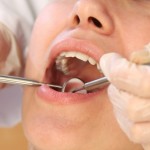
Dental caries is very common worldwide and is a significant public health problem. Caries detection is important for its prevention and management. While visual inspection is the most commonly used detection method a number of other detection adjuncts are used including radiographs, fluorescence-based, light-based and electrical conductance. In recent years there has been an increase in the availability of diagnostic accuracy studies for caries detection.
The aim of this review was to compare the accuracy of different methods for detecting carious lesions in primary and permanent teeth.
Methods
Searches were undertaken in the Medline/PubMed, Embase, Scopus, and OpenGrey databases as well as the IADR (International and American Association for Dental Research) and ORCA (European Organisation for Caries Research) proceedings. Studies reporting on the accuracy visual, radiographic and fluorescence-based methods involving any tooth surface (occlusal, proximal or free smooth surfaces) and published in English were considered. Two reviewers independently selected studies for each method. Statistical analysis was conducted at two levels, all caries lesions and advanced lesions and for tooth type and surface. Multilevel analyses, meta-regressions and comparisons of bivariate summary receiver operating characteristics curves (SROCs) were undertaken.
Results
- 240 studies published between 1975-2020 were included.
- 72% of the studies were laboratory based.
- 6% of studies involved occlusal surfaces.
- 73% of studies involved permanent teeth.
- The certainty of the evidence was considered to be low to very low.
- Visual inspection was better than radiographs on occlusal surfaces at all caries lesion thresholds and proximal surfaces of permanent teeth only at all lesion thresholds in laboratory setting.
- Fluorescence-based detection (LE) was slightly better than visual inspection for advanced lesions on occlusal surfaces of permanent teeth in the clinical setting and for all lesions on proximal surfaces of permanent teeth in the laboratory setting.
- LF was worse than visual inspection for advanced occlusal lesions in permanent teeth in the laboratory setting.
- Although LF showed slightly better performance than visual inspection with advanced lesions, the latter had significantly higher specificity than other methods in all settings.
- Summary tables for clinical studies at all caries lesions levels are shown below
Permanent teeth occlusal surfaces– clinical studies all carious lesions
| Area under SROC curves (95%CI) | Overall sensitivity (95%CI) | Overall specificity (95%CI) | Overall accuracy (95%CI) | |
| Occlusal surfaces | ||||
| Visual Inspection | 0.87 (0.76-0.91) | 85.1 (79.1-89.6) | 75.9 (65.5-83.9) | 83.6 (76.9-88.6) |
| Radiographs | 0.63 (0.30-0.89) | 34.0 (10.8-68.5) | 65.3 (42.5-82.8) | 37.7 (14.5-68.3) |
| Laser fluorescence | 0.93 (0.83-0.92) | 86.9 (80.9-91.2) | 88.9 (78.5-94.6) | 87.8 (82.4-91.7) |
| Proximal surfaces | ||||
| Visual Inspection | 0.78 (0.16-0.95) | 69.4 (27.4-93.1) | 86.9 (69.7-95.0) | 78.7 (60.8-89.8) |
| Radiographs | 0.64 (0.56-0.81) | 57.7 (40.9-72.8) | 92.6 (49.9-99.3) | 74.0 (52.6-88.0) |
| Laser fluorescence | 0.96 (0.87-0.98) | 93.3 (89.2-95.9) | 89.3 (88.2-90.3) | 91.9 (90.3-93.3) |
Primary teeth occlusal surfaces – clinical studies all carious lesions
| Area under SROC curves (95%CI) | Overall sensitivity (95%CI) | Overall specificity (95%CI) | Overall accuracy (95%CI) | |
| Occlusal surfaces | ||||
| Visual Inspection | 0.84 (0.65-0.90) | 79.0 (59.8-90.5) | 59.8 (41.1-76.1) | 71.1 (52.1-84.8) |
| Radiographs | 0.73 (0.55-0.86) | 61.1 (48.6-72.3) | 79.0 (66.7-87.6) | 65.3 (52.2-76.4) |
| Laser fluorescence | 0.80 (0.70-0.82) | 68.3 (44.5-85.3) | 86.2 (77.1-92.0) | 75.0 (65.8-82.4) |
| Proximal surfaces | ||||
| Visual Inspection | 0.77 (0.71-0.82) | 46.9 (31.3-63.2) | 88.6 (74.2-95.4) | 59.2 (49.7-68.1) |
| Radiographs | 0.73 (0.44-0.94) | 22.2 (16.0-29.8) | 96.4 (88.5-98.9) | 46.5 (29.8-64.0) |
| Laser fluorescence | 0.83 (0.69-0.89) | 42.3 (22.2-65.2) | 89.3 (76.2-95.6) | 59.2 (42.6-73.9) |
Conclusions
The authors concluded: –
Visual caries detection alone is adequate for most patients in daily clinical practice regardless of tooth type or surface.
Comments
This review compares the diagnostic accuracy of three caries detection approaches,visual inspection, radiographs and fluorescence-based detection. Two of these (radiographs and fluorescence-based detection) have been addressed in recent Cochrane reviews (Dental Elf – 6th Jan 2021, Dental Elf – 19th Mar 2021) which are part of a suite of Cochrane reviews on various caries detection methods. The authors of this review have undertaken a broad search for evidence. While they have excluded English language papers they do note that the number excluded for this reason is small. Most of the included studies (72%) were laboratory based so these may not be directly applicable to the clinical situation. Another key issue that is also highlighted in the recent Cochrane review is that the spectrum of disease presenting the included studies is likely to be biased and not be representative of the typical clinical setting. This presents challenges for interpreting the results so the findings should be considered cautiously.
Links
Primary Paper
Gimenez T, Tedesco TK, Janoian F, Braga MM, Raggio DP, Deery C, Ricketts DNJ, Ekstrand KR, Mendes FM. What is the most accurate method for detecting caries lesions? A systematic review. Community Dent Oral Epidemiol. 2021 Apr 12. doi: 10.1111/cdoe.12641. Epub ahead of print. PMID: 33847007.
Other references
Dental Elf – 22nd Mar 2021
Dental Elf – 19th Mar 2021
Dental imaging methods for early caries detection and diagnosis
Dental Elf – 1st Feb 2021
Dental Elf – 6th Jan 2021
